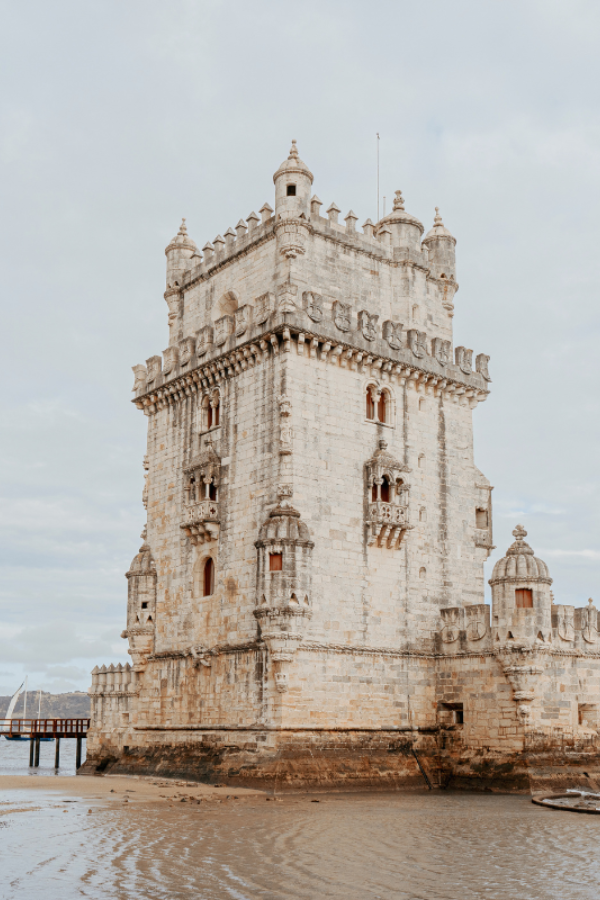
Belém Tower and Lisbon’s Age of Discoveries
Summary
Reflection Questions
Journal Prompt
Nestled on the banks of the Tagus River, Belém Tower serves as a striking reminder of Lisbon’s rich history and its pivotal role in the Age of Discoveries. This architectural gem, now honored as a UNESCO World Heritage Site, not only captivates visitors with its stunning Manueline design but also embodies the adventurous spirit and historical depth of Portugal. Its significance extends beyond mere aesthetics, offering a tangible link to the past where explorers embarked on voyages that would shape the world’s history. Surrounded by Lisbon’s breathtaking beauty, from its undulating hills to the vibrant streets that pulse with life and color, the tower stands as a beacon for those eager to delve into a city where history and modernity dance seamlessly together. It invites travelers to explore, learn, and be inspired by the enduring legacy of one of Europe’s most enchanting capitals. From its stunning military architecture to the surrounding landscape, learn all about the Tower of Belém below!
The Historical Significance of Belem Tower

Belém Tower emerged from the heart of the Age of Discoveries, standing as a testament to Portugal’s unrivaled maritime ambitions. Designed in the early 16th century by military architect Francisco de Arruda along the Tagus River’s northern bank, it served as a departure point for explorers who dared to navigate uncharted waters, seeking new worlds. This historic sentinel not only witnessed the dawn of global exploration but also symbolized the nation’s bold aspirations and its pivotal role in connecting diverse cultures.
Architectural Highlights
The tower’s design is a captivating showcase of the Manueline style, a unique architectural expression that flourished during Portugal’s golden age of discovery. Its intricate facades, adorned with maritime motifs, carvings of exotic creatures, arched windows, and ornate ropes that seem to tie the structure to its nautical roots, reflect the era’s excitement and curiosity about the world beyond. The Manueline style, with its blend of Gothic and Renaissance elements, mirrors the era’s blend of tradition and innovation, making the tower a masterpiece of historical artistry. Indoors, a narrow spiral staircase that extends from the ground floor and a beautiful roof terrace add to the building’s appeal.
Historical Uses
Initially conceived as part of Lisbon’s defense system, Belém Tower has transcended its martial origins to become a symbol of Portugal’s Age of Exploration. Its strategic location near the mouth of the Tagus River allowed it to guard the city from seafaring invaders, serving as a fortress of security and surveillance. Over the centuries, it has transformed from a bastion of defense to a ceremonial gateway for Lisbon, welcoming home Portugal’s maritime heroes and symbolizing the country’s expansive vision.
Construction and Upkeep
The construction and upkeep of Belém Tower in Lisbon were closely associated with King Manuel I of Portugal, also known as “The Fortunate.” King Manuel I, who reigned from 1495 to 1521, was the monarch under whose auspices the tower was built between 1514 and 1520. His era, known as the Manueline period, was marked by prosperity and maritime exploration, leading to the Age of Discoveries. The architectural style of the tower, rich with maritime motifs and symbols of the Discoveries, reflects the king’s ambition and the national pride of Portugal during this period.
King Manuel I’s reign was a time of great wealth and expansion for Portugal, with explorers reaching new territories around the globe, establishing trade routes and bringing back riches that funded architectural wonders back home, including the Belém Tower. The tower served not only as a defense mechanism but also as a ceremonial gateway to Lisbon, symbolizing the country’s newfound global significance.
After King Dom Manuel, the upkeep and any modifications to the tower would have been the responsibility of his successors, though specific actions by individual kings are less documented in historical records regarding the tower. The ongoing preservation and restoration efforts in more recent times have been managed by various Portuguese government agencies and cultural heritage organizations, ensuring the tower’s endurance as a symbol of Portugal’s rich historical legacy and its contributions to world history.
Modern Restoration and Preservation

Recognizing the tower’s profound historical and cultural significance, concerted efforts have been made to preserve its legacy for future generations. Restoration projects have carefully tended to its aged stones and distinctive adornments, ensuring that the tower remains a vivid marker of Portugal’s rich historical tapestry. These efforts underscore a commitment to maintaining the tower not just as a monument of the past, but as a living legacy that continues to inspire and educate all who stand in its shadow.
Belém Tower Through the Ages
Since its inception, Belém Tower has been a silent witness to a tapestry of events that have shaped the narrative of Lisbon and Portugal at large. From its role in the grand era of the Portuguese Discoveries, where it greeted the return of explorers and navigators, to its use as a point of defense against invasions, the tower has played an integral part in Portugal’s maritime history. Its walls have observed the rise and fall of empires, the ebb and flow of Lisbon’s fortunes, and the countless stories of those who passed by its watchful gaze, making it a storied guardian of history.
Changes in Its Structure and Function Over the Centuries
Originally built as a fortification at the mouth of the Tagus River, Belém Tower’s function and form have evolved through the ages. From its early days as a defensive stronghold, it has served various roles—a customs outpost, a telegraph station, and even a lighthouse. These shifts reflect the changing priorities and technologies of the times. Architecturally, while the essence of its Manueline style has been preserved, restorations and conservation efforts have ensured its resilience against the wear of time, allowing it to stand proudly as a monument to Portugal’s illustrious past.
The Tower as a Symbol of Portuguese Resilience and Exploration
Beyond its physical presence, Belém Tower symbolizes the enduring spirit of the Portuguese people and their remarkable contributions to global exploration. It stands as a testament to the resilience of a nation that navigated the uncertainties of the open seas to discover new lands. This iconic structure embodies the adventurous spirit, the hope for the unknown, and the courage that propelled Portugal to the forefront of the Age of Discoveries. As a monument, it inspires not just a reflection on the past but also a vision of perseverance and the endless possibilities that lie on the horizon.
Visiting Belem Tower Today
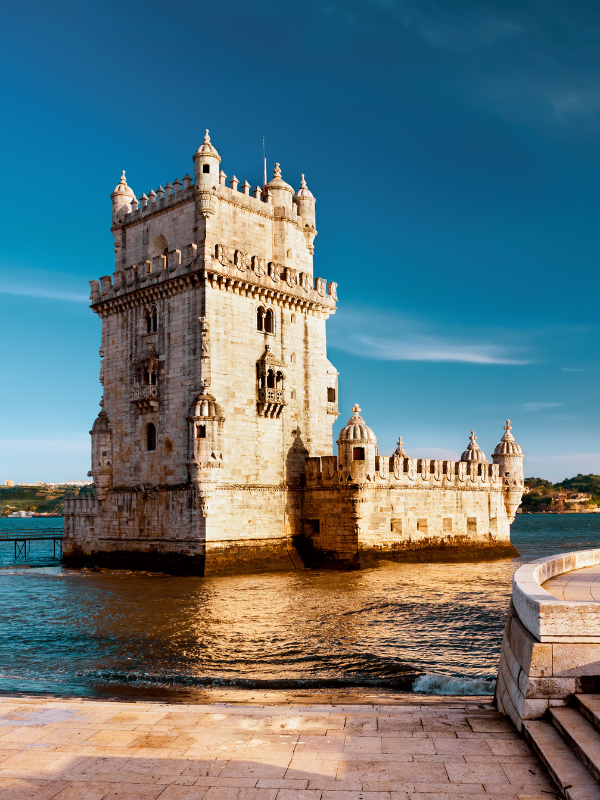
Today, Belém Tower beckons travelers from around the globe, inviting them to step into a world where history meets the horizon. For those planning a visit, mornings or late afternoons are ideal to catch the soft golden light that bathes its stone façade, perfect for photography and avoiding the midday crowds. Tickets can be purchased on-site or online in advance, a tip worth noting during the tourist peak season. To enrich your experience, consider hiring a guide or joining a tour to uncover the layers of history etched into the tower’s walls, making your visit not just a sightseeing stop but a journey through time.
Interactive Exhibits and Displays Within the Tower
Inside, the tower transforms from a historical monument to an immersive storytelling space. Interactive exhibits and displays breathe life into the tales of maritime adventure and the Age of Discoveries, allowing visitors to engage with the past in a hands-on way. Through these curated experiences, the tower doesn’t just tell stories; it invites visitors to feel the weight of history, to hear the whispers of explorers long gone, and to see the world through the eyes of those who stood watch over Lisbon’s waters centuries ago.
As you ascend the narrow spiral staircases, each room unfolds like a chapter from a historical novel. The Governor’s Hall, with its robust yet elegant architecture, whispers tales of strategic meetings and decisions that shaped the fate of expeditions. Kings Hall, presumed to have housed royalty like King John II, offers a glimpse into the life of luxury and power, while the Audience Hall played host to Portuguese explorers. Each chamber, with its distinct purpose and story, contributes to the narrative tapestry of the tower, inviting visitors to imagine the bustling life and pivotal moments these walls have witnessed.
Viewing Points and Photo Opportunities
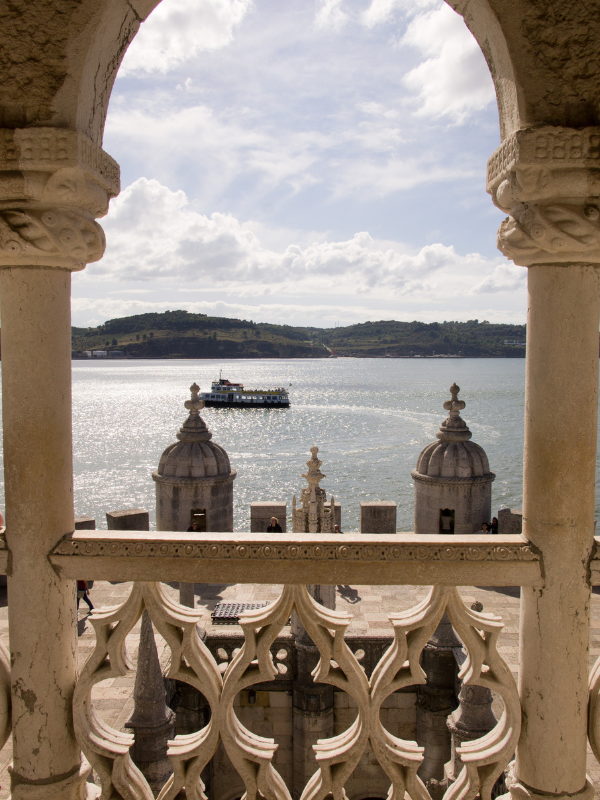
Climbing further, the tower rewards visitors with panoramic viewing points that offer breathtaking vistas of the Tagus River and the surrounding landscape of Belém. From the open terraces and battlements, one can capture the perfect snapshot of Lisbon’s scenic beauty and architectural diversity. These vantage points provide not just photo opportunities but moments of reflection on the journey of those who once gazed upon the same horizon, setting sail into the unknown. The tower, in its timeless beauty and historical depth, offers a bridge between the past and present, captured in every photo and memory made here.
Exploring Lisbon Beyond the Portuguese Fortification
Culinary Delights
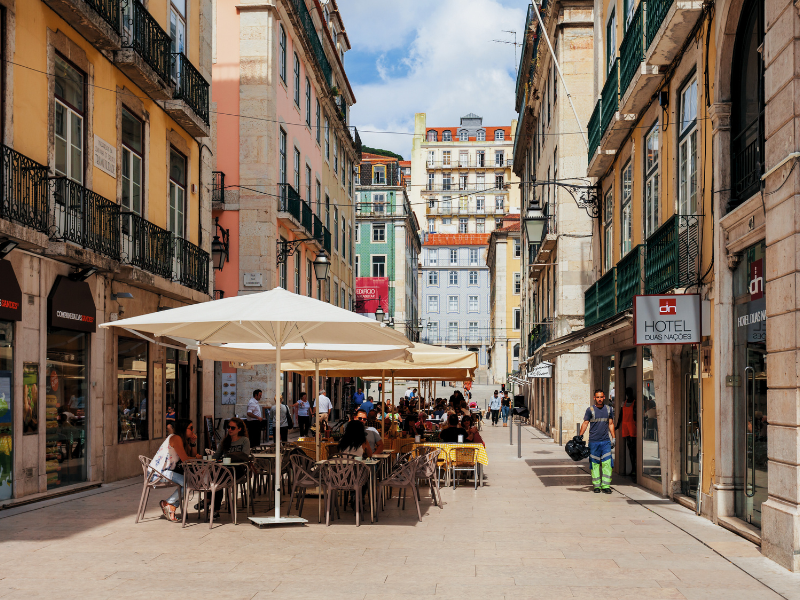
Nestled within the historic heart of Lisbon, the area around Belém Tower is a gastronomic treasure trove that beautifully marries traditional Portuguese flavors with contemporary culinary innovation. Local restaurants, such as O Pão de Canela, charm visitors with their authentic dishes and pastries, offering a taste of Portugal’s rich culinary heritage. Not far from these traditional spots, the legendary Pasteis de Belém invites travelers to indulge in Lisbon’s iconic custard tarts, a recipe shrouded in secrecy and steeped in over 180 years of history.
For those seeking a modern twist on Portuguese cuisine, Darwin’s Café stands out with its creative menu and stunning river views, providing a fresh perspective on local ingredients. Meanwhile, Feitoria, with its Michelin-star accolade, elevates dining to an art form, blending Portuguese flavors with global gastronomic techniques. This culinary landscape near Belém Tower offers a delightful journey through Portugal’s diverse flavors, from the comfort of cozy, traditional settings to the elegance of contemporary dining experiences, all while basking in the area’s historical ambiance and picturesque vistas.
Museums and Galleries
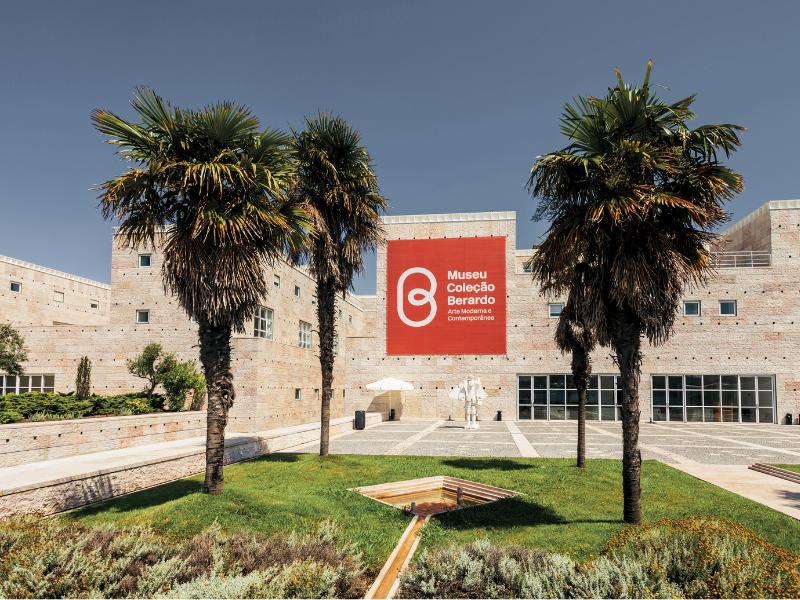
The vicinity of Belém Tower serves not just as a historical beacon but as a vibrant nucleus of cultural exploration, teeming with museums and galleries that celebrate the breadth of Portuguese art, history, and innovation. At the heart of this cultural landscape lies the Cultural Center of Belém, a dynamic space where art exhibitions and performances converge, offering a window into the contemporary creative pulse of Lisbon.
Just a stone’s throw away, the Maritime Museum takes visitors on a journey through Portugal’s illustrious seafaring past, with meticulously preserved artifacts that chronicle the adventures and discoveries that shaped the modern world. The National Coach Museum presents a different facet of history, housing an impressive array of opulent carriages that transport visitors back to the grandeur of 16th to 19th-century Europe.
For aficionados of modern and contemporary art, the Berardo Collection Museum offers a stark contrast with its cutting-edge exhibitions, showcasing works that challenge and redefine the boundaries of artistic expression. Together, these institutions create a rich tapestry of cultural exploration, inviting visitors to delve deep into the stories and innovations that have defined Portuguese culture across the ages.
Why Women Should Visit Lisbon
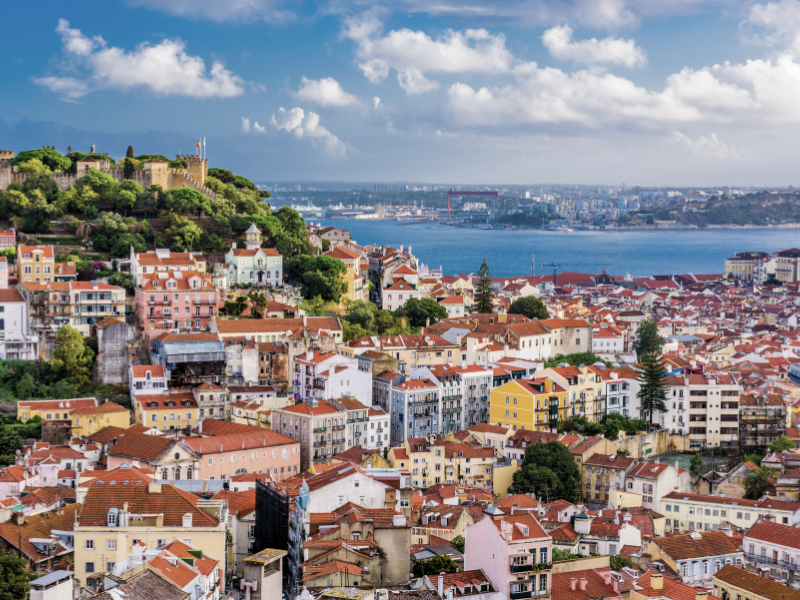
Lisbon is generally considered a safe and welcoming destination for solo women travelers. The city is known for its friendly locals, vibrant culture, and accessible public transportation, making it a popular choice for those exploring on their own. Below are a few reasons why Lisbon (and the Torre de Belém) is a good destination for solo women travelers.
Safety
Lisbon has a relatively low crime rate compared to other major European cities. Petty crime, like pickpocketing, does exist, especially in tourist areas, so standard precautions should be taken.
Public spaces are generally safe, even at night, but it’s always wise to stay aware of your surroundings and avoid poorly lit or deserted areas.
Friendly Locals
Many Lisboetas speak English, especially in the hospitality industry and younger generations, making it easier for solo travelers to navigate and interact. The locals are known for being open and helpful to tourists, so you’ll often find assistance and company if you seek it.
Ease of Navigation
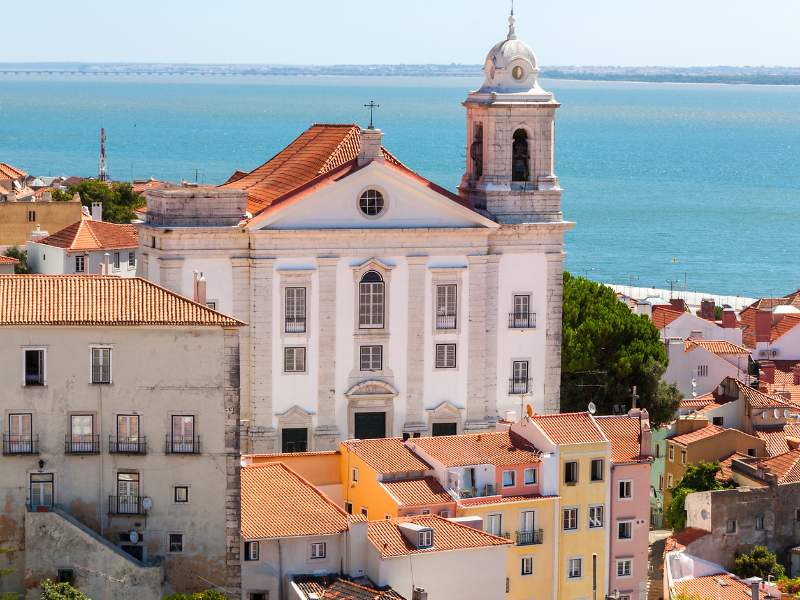
Lisbon’s most visited areas are relatively compact and can be explored on foot, which is great for solo travelers wanting to take their time and immerse themselves in the local culture. The city’s public transport system, including metros, trams, and buses, is extensive, affordable, and user-friendly. The iconic Tram 28 offers a scenic route through major tourist areas.
Vibrant Social Scene
Lisbon boasts a plethora of cafes, eateries, and wine bars where solo travelers can feel comfortable dining alone, often sparking conversations with locals and fellow travelers. The city hosts numerous events, workshops, and tours that cater to a wide range of interests, from cooking classes and wine tastings to walking tours, making it easy to meet people.
Cultural Richness and Activities
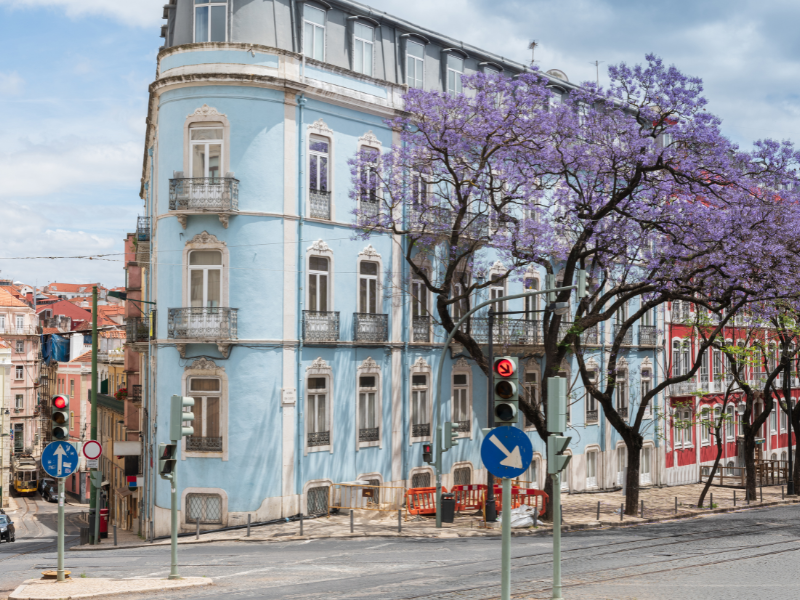
There are countless museums and galleries to explore, many within walking distance of each other. Lisbon is close to several beautiful beaches and picturesque towns like Sintra and Cascais, perfect for safe and easy day trips.
Will you visit Belem Tower and Lisbon’s other attractions? Let us know in the comments below!








